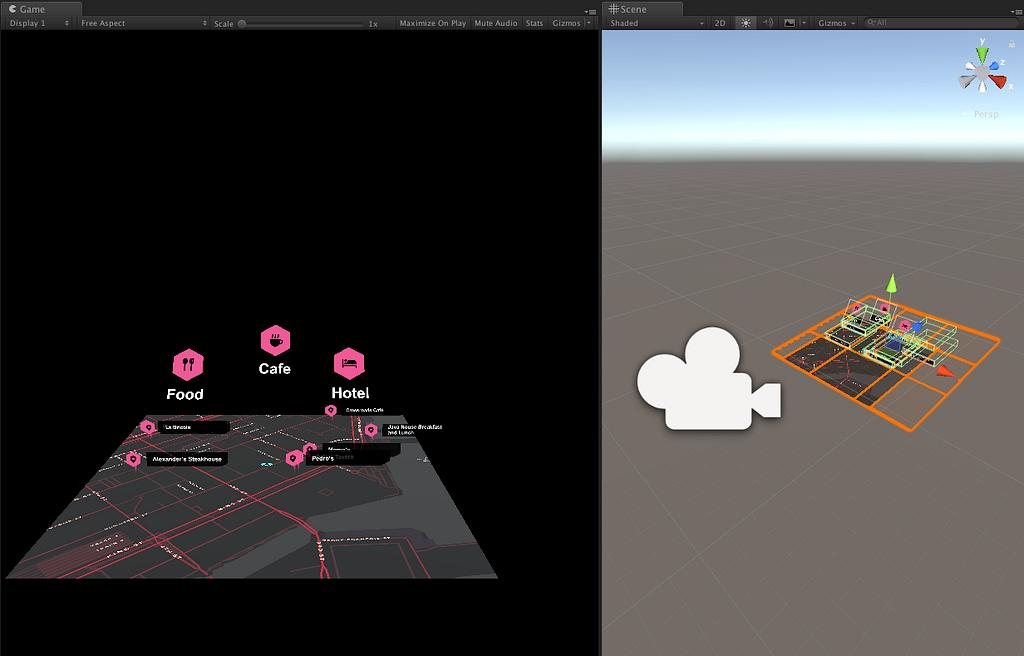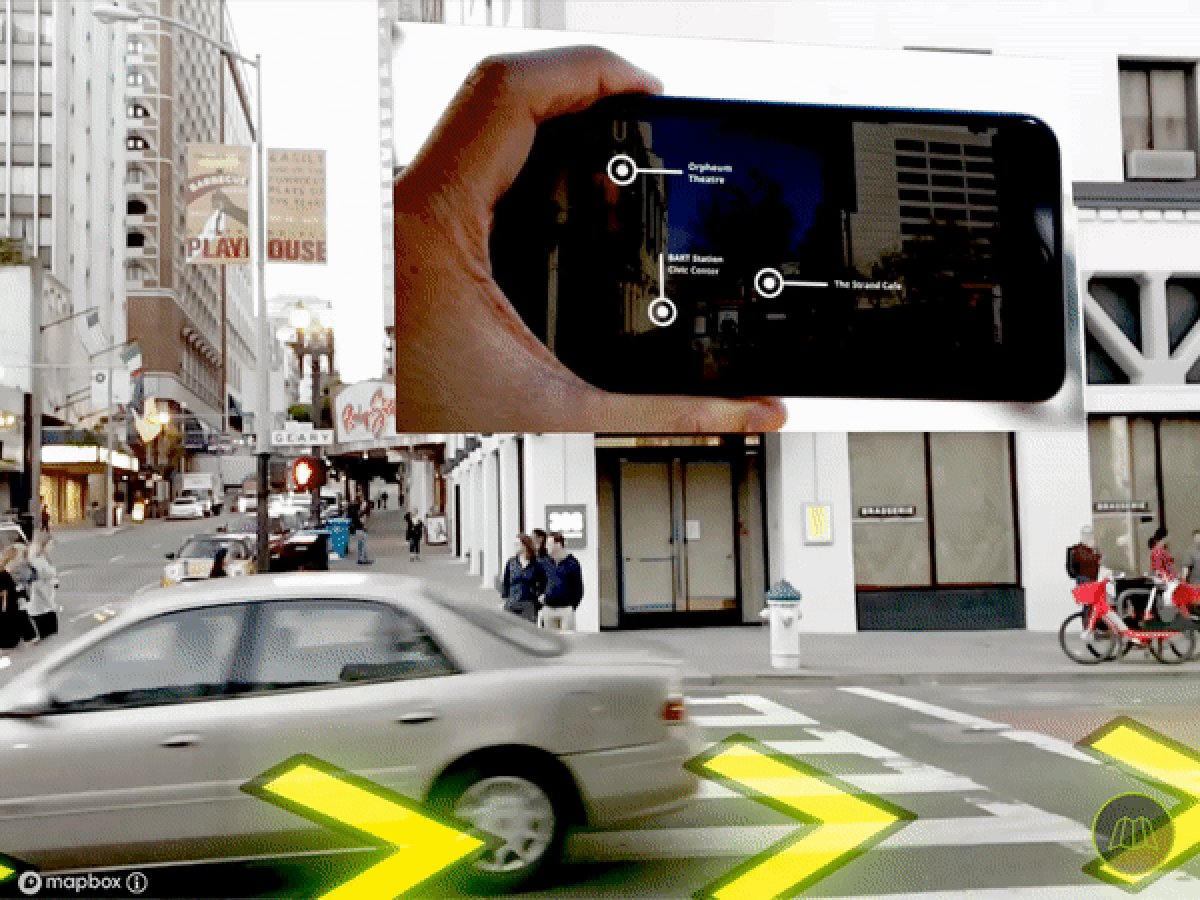By: Miroslav Lysyuk
Augmented reality combined with rich, geospatial data is already changing how we interact with the world. Recently, we got our hands on an ODG R-9 to prototype new ways to experience navigation. Using our Maps SDK for Unity, we built maps, location, and turn-by-turn directions into a wearable display.
Why wearables + AR navigation
Navigating with a mobile device requires constantly taking it out of your pocket and performing a series of steps to orient while focusing away from what’s around you. Using the Maps SDK for Unity to provide location information and navigation in AR with ODG’s glasses, we’ve created a smooth, continuous, and intuitive experience. The map and navigation details are viewed on top of the world in front of you. Your hands are completely free, so you can stay mindful and in-the-moment.
Maps on a wearable display

ODG’s light-added display means that color palettes don’t translate exactly from what is designed on screen and what is seen in through the glasses. Blacks and blues are more transparent, and lighter colors are bright and opaque in contrast. We used Mapbox Studio to quickly design new, custom map visuals that compliment the strengths of the R-9’s unique display.


Map markers also need a new treatment for AR. Text has to be large, legible, and selectable from a distance. The R-9’s new 6DOF (6-degrees-of-freedom) functionality tracks the wearer’s position and rotation smoothly, letting users lean into the map to see more detail, as well as select a point-of-interest by gazing at it.

The 6DOF presents new challenges for selection UI, as users can constantly change their viewpoint on the map and its labels. We arrange labels dynamically with a force-directed layout and favor showing a limited set of relevant points-of-interest to prevent overwhelming the user in AR.
World-scale design
Any world-scale UX must incorporate the limitations of the device’s sensors. Creating believable interactions requires the app’s AR map to align with the real world. This is tricky because even though built-in sensors are getting better, being even 5 degrees out of alignment can destroy the display’s illusion. Strategies for improving automatic calibration in AR include GPS reading, filtering, and creating intuitive calibration experiences. We built an experimental AR library where we test new approaches and help developers tackle this problem in their apps.

With the R-9 glasses, we limited world-scale information to the immediate few meters. When displaying distant information, even the smallest calibration error would break the illusion and become confusing to users.
Beyond navigation

Great apps for AR glasses will move beyond the conventional navigation workflow. Leverage the Maps SDK for Unity to create new, immersive world-scale experiences. Tell us about your projects on twitter using #BuiltWithMapbox.
World-scale AR navigation with ODG wearables was originally published in Points of interest on Medium, where people are continuing the conversation by highlighting and responding to this story.